Notre Dame Cathedral Paris, also known as Cathédrale Notre-Dame de Paris, is a masterpiece of Gothic architecture in France. It stands on the eastern end of the Île de la Cité, a small island in the Seine River. The cathedral was built over two centuries, starting in 1163 and ending in 1345. It replaced two earlier churches built on the site of a Roman temple dedicated to Jupiter. Notre-Dame Cathedral Paris has a choir and apse, a short transept, and a nave flanked by double aisles and square chapels. The roof is supported by flying buttresses, which are exterior arches that allow the walls to be thinner and have large windows. The cathedral has three rose windows, which are circular stained-glass windows that depict scenes from the Bible and the church’s history. The windows are among the greatest masterpieces of Christianity. The western facade of the Notre Dame Cathedral Paris has two towers that are 223 feet (68 meters) high. The towers were supposed to have spires, but they were never added. The facade has three portals, or doors, decorated with sculptures and carvings. The portals show the stories of the Virgin Mary, the Last Judgement, and St. Anne, the mother of Mary. Above the portals, there is a row of statues of the kings of Judah, who were mistaken for the kings of France during the French Revolution and beheaded. Notre Dame Cathedral Paris has witnessed many important events in the history of France, such as the coronation of Napoleon Bonaparte, the funeral of Charles de Gaulle, and the celebration of the liberation of Paris from Nazi occupation. It is also a symbol of French culture and identity and a source of inspiration for artists and writers. The cathedral was severely damaged by a fire in 2019, which destroyed the roof and the 19th-century spire. The cathedral’s restoration is expected to be completed by 2024, the year of the Paris Olympics.
What is the Notre Dame Cathedral Paris?
Notre-Dame Cathedral Paris is a medieval Catholic cathedral dedicated to the Virgin Mary. It is one of the world’s most famous and oldest Gothic cathedrals. Notre Dame Cathedral Paris is located on the Île de la Cité, an island in the Seine River, in the 4th arrondissement of Paris, France. Notre Dame Cathedral Paris was built between 1163 and 1345. The foundation stone was laid by Pope Alexander III in 1163, and the high altar was consecrated in 1189. The choir, the western facade, and the nave were completed by 1250, and other additions were made over the next century. Cathédrale Notre-Dame de Paris was built by various architects, craftsmen, and workers under the supervision of Bishop Maurice de Sully, who initiated the project in 1160. Some notable architects involved were Jean de Chelles, Pierre de Montreuil, Pierre de Chelles, Jean Ravy, and Jean le Bouteiller. The Notre Dame Cathedral Paris has a length of 420 feet (128 meters), a width of 157 feet (48 meters), and a height of 115 feet (35 meters) at the nave. The two towers at the western facade are 223 feet (68 meters) high, and the spire that was added in the 19th century was 315 feet (96 meters) high before it was destroyed by a fire in 2019. The cathedral has three large rose windows, 10 bronze bells, and three pipe organs.
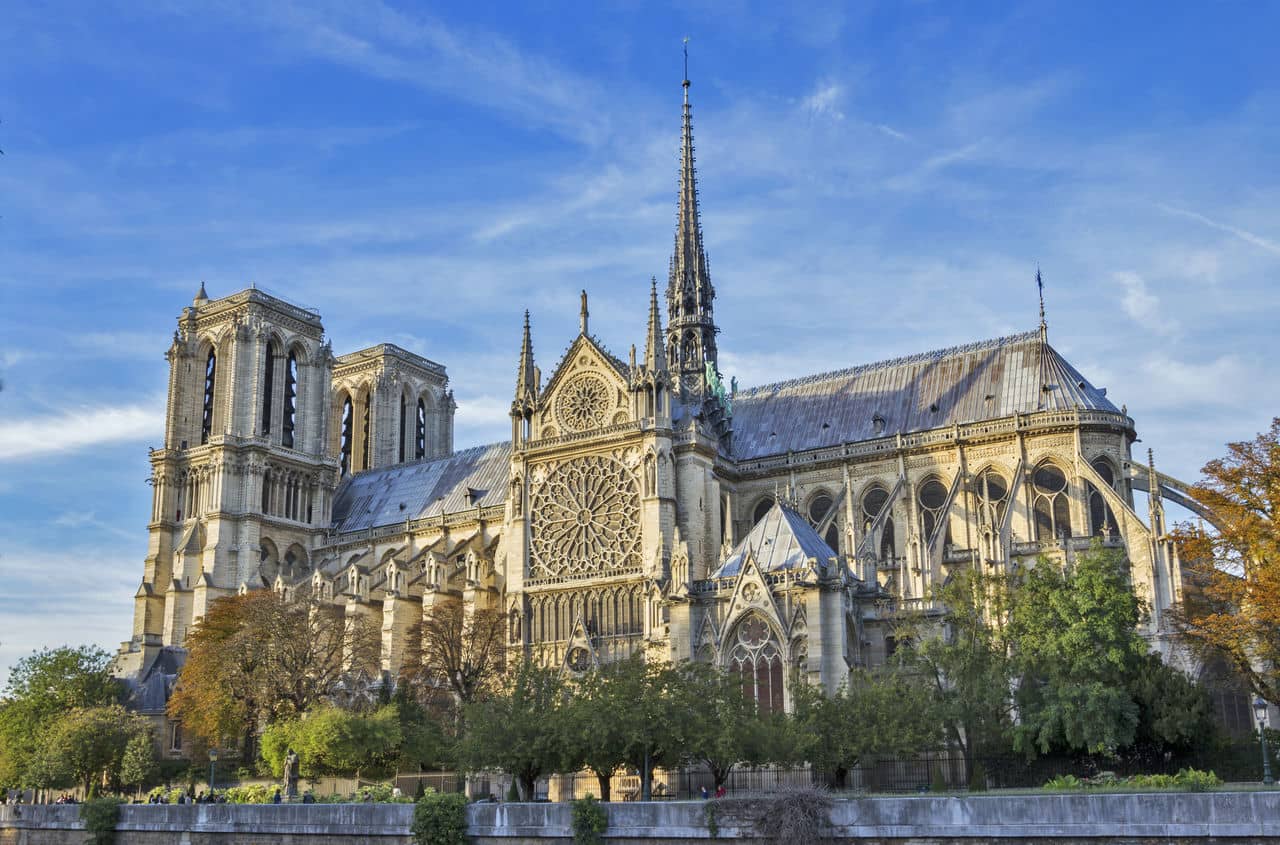
What architectural style is most prominent in Notre Dame Cathedral Paris?
The architectural style that is most prominent in the Notre Dame Cathedral Paris is Gothic. Gothic architecture is a style of building that emerged in France in the 12th century and spread throughout Europe until the 16th century. It is characterized by pointed arches, rib vaults, flying buttresses, large windows, and elaborate sculptures. Cathédrale Notre-Dame de Paris is one of the finest examples of French Gothic architecture. Its features distinguish it from the earlier Romanesque style, such as its three large rose windows, its three pipe organs, and its immense church bells. The cathedral also has some elements of the later Rayonnant Gothic style, such as the single-arch flying buttresses that support the apse. The cathedral underwent several modifications and restorations over the centuries. In the 18th century, some of its Gothic features were removed or replaced by classical ones. In the 19th century, a major restoration project by Eugène Viollet-le-Duc restored the cathedral to its original Gothic appearance and added a new spire. In 2019, a fire damaged the roof, the spire, and some of the interior. A reconstruction project is underway to restore the cathedral to its former glory.
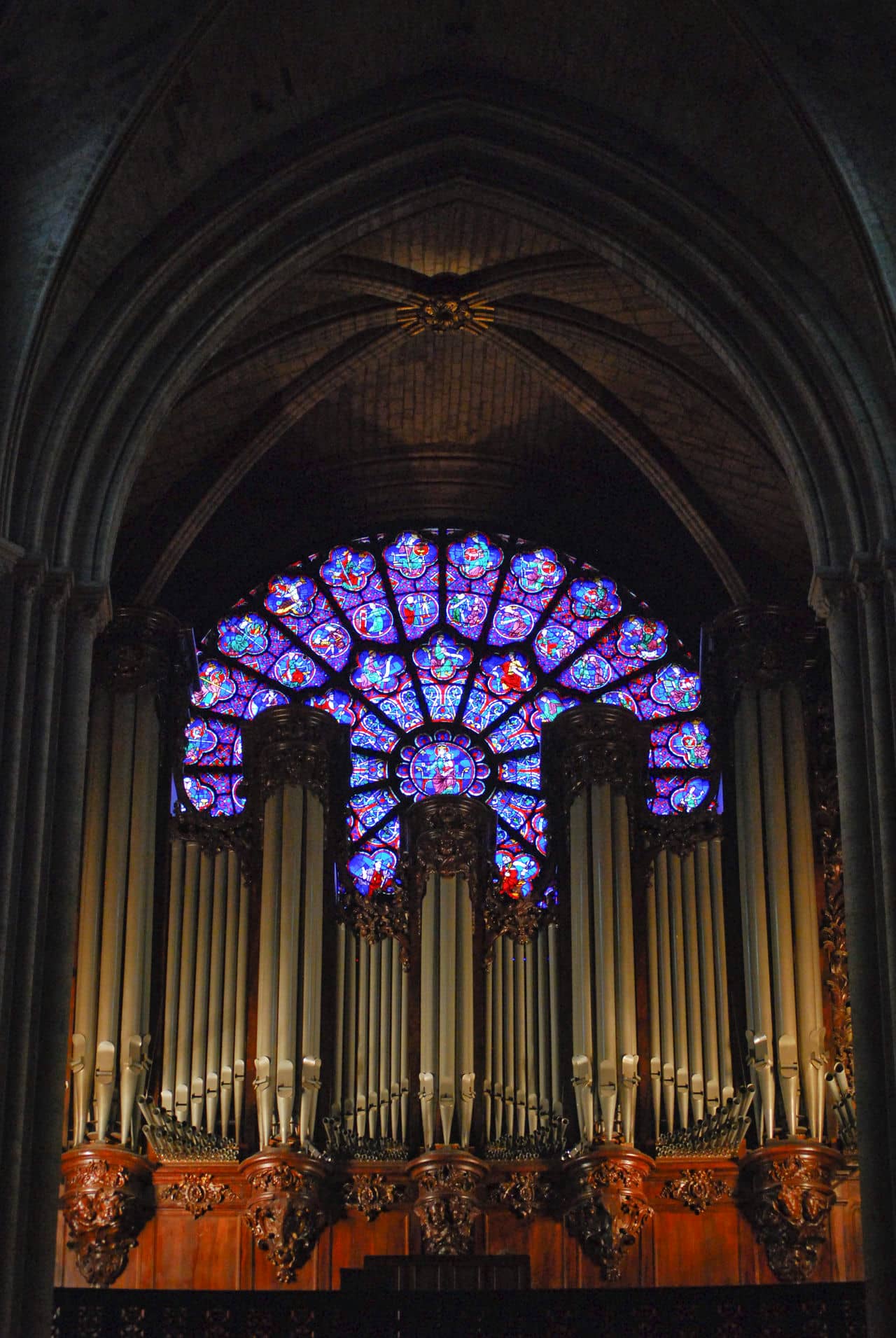
What structural engineering principles are employed in the construction of the Notre Dame Cathedral Paris?
4 major structural engineering principles were employed in the construction of the Notre Dame Cathedral Paris. Firstly, the main structural principle of the cathedral is the use of pointed arches. Pointed arches are arches that have a narrow and sharp shape rather than a semicircular one. They have several advantages over the Romanesque arches that were used before. They can span larger distances, distribute the thrust more evenly, and allow for more flexibility in the design. Pointed arches are found in the nave, the choir, the transept, and the cathedral’s facade. Secondly, another important structural principle is the use of rib vaults. Rib vaults have diagonal ribs that cross each other at the apex. They are supported by columns or piers that transfer the load to the ground. Rib vaults have several benefits over the barrel vaults that were used before. They can cover irregular spaces, reduce the weight of the ceiling, and create a sense of height and lightness. Rib vaults are found in the nave, the choir, the transept, and the chapels of the cathedral. Thirdly, another structural principle is the use of flying buttresses. Flying buttresses are external supports that consist of an arch and a pier. They counteract the lateral thrust of the vaults and transfer it to the ground. They have several advantages over the simple buttresses that were used before. They can be placed further away from the walls, allowing for more space and light. They can also be decorated with pinnacles and statues, adding to the aesthetic appeal of the building. Flying buttresses are found around the choir, the transept, and the cathedral’s nave. Lastly, a fourth structural principle is the use of large windows. Large windows are openings that allow natural light and ventilation to enter the building. They have several benefits over the small windows that were used before. They can create a sense of spaciousness and harmony and display colorful stained glass depicting religious scenes and stories. They can also reduce the need for artificial lighting and heating, saving energy and resources. Large windows are found in the nave, the choir, the transept, and the facade of the cathedral.
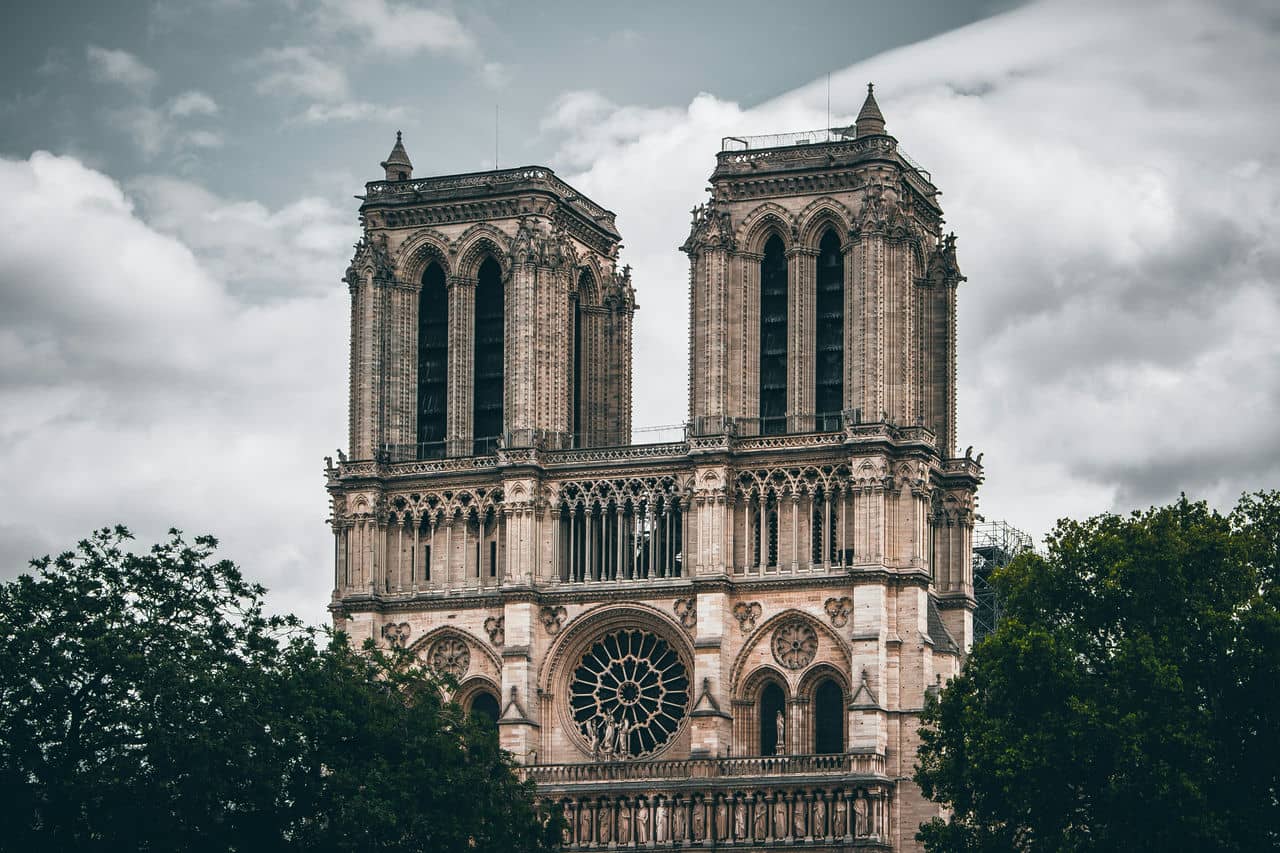
Who designed the Notre Dame Cathedral in Paris?
The Notre Dame Cathedral Paris was designed by the French architect Maurice de Sully. He was the architect of Cathédrale Notre-Dame de Paris, responsible for the overall architectural plan, and supervised the cathedral’s construction. Maurice de Sully was the Bishop of Paris at the time, and he initiated the project to replace the older Romanesque cathedral with a new Gothic one. The construction of the Notre Dame Cathedral Paris began in 1163 and was completed around 1345. It was a collaborative effort involving many skilled craftsmen, including master masons, sculptors, and stained glass artists. The cathedral is known for its Gothic architectural style, characterized by pointed arches, ribbed vaults, and flying buttresses, which allowed for taller and more intricate designs.
What are the historical design influences visible in Notre Dame Cathedral Paris?
There are 4 major historical design influences visible in Notre Dame Cathedral Paris. Firstly, the cathedral exhibits significant Romanesque influences. This style, prevalent in Europe during the 11th and 12th centuries, is characterized by thick walls, rounded arches, and small windows. Elements of Romanesque design can be observed in the lower portions of the cathedral, such as the robust piers and the decorative sculptures adorning the exterior. Secondly, the cathedral showcases prominent Gothic influences. The Gothic architectural style emerged in the 12th century, characterized by pointed arches, ribbed vaults, and flying buttresses. These features are prominently displayed in the Cathédrale Notre-Dame de Paris, particularly in its upper levels. The pointed arches create a sense of height and elegance, while the ribbed vaults allow for greater structural stability and the soaring verticality of the interior space. Thirdly, the cathedral incorporates elements of French Gothic design, which evolved from the broader Gothic style. The notable features include the rose windows, which are large circular stained glass windows with intricate tracery. The Notre Dame Cathedral Paris showcases three magnificent rose windows, the most famous being the west rose window. These windows are a testament to the skilled craftsmanship of the period and contribute to the cathedral’s overall aesthetic appeal. Lastly, the Cathédrale Notre-Dame de Paris also bears the influence of medieval French architecture. The cathedral’s sculptural decorations and ornate details reflect the artistic sensibilities of the medieval period. The intricate stone carvings on the facade and the statues filling the portals exemplify the craftsmanship and religious symbolism integral to medieval architectural design.
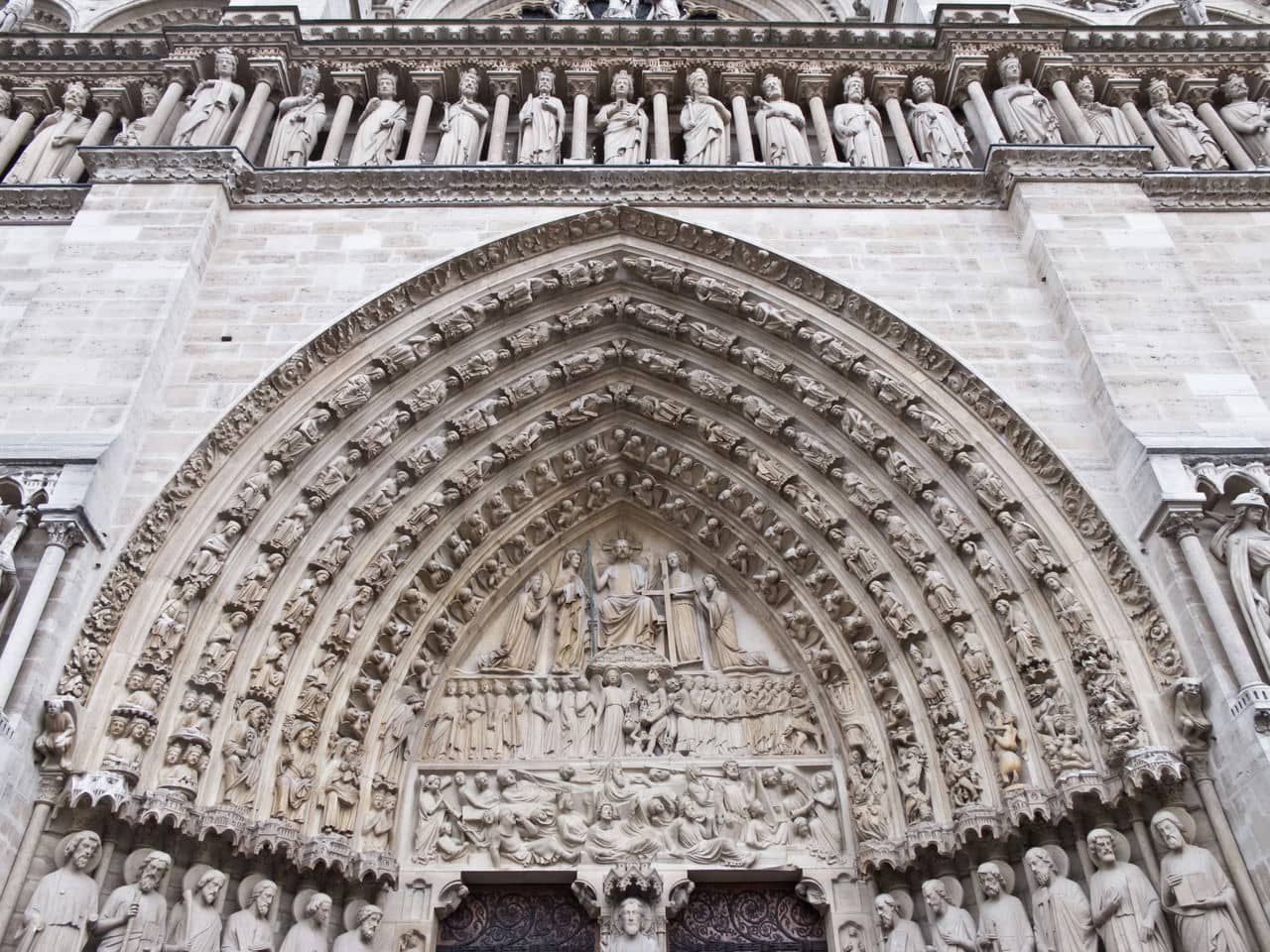
How has Notre Dame Cathedral Paris influenced the design of other buildings in France?
The Notre Dame Cathedral Paris influenced the design of other buildings in France in 4 ways. Firstly, the Sainte-Chapelle is a royal chapel built by King Louis IX in the 13th century to house his collection of holy relics, including the Crown of Thorns. The chapel is located near Notre Dame de Paris, and it shares some architectural features with the cathedral, such as the pointed arches, the ribbed vaults, and the flying buttresses. However, the Sainte-Chapelle is also distinguished by its extensive use of stained glass windows, which cover almost the entire upper chapel and create a dazzling effect of light and color. The windows depict scenes from the Old and New Testaments and the history of the relics. The Sainte-Chapelle is considered a masterpiece of the Rayonnant Gothic style, emphasizing the radiance and harmony of the Gothic forms. Secondly, the Basilica of Saint-Denis is a former abbey church regarded as the first Gothic building in history. It was built in the 12th century by Abbot Suger, who was inspired by the renovation of the Notre Dame de Paris choir. The basilica is famous for its innovative use of the pointed arch, the ribbed vault, and the stained glass window, which allowed for a more spacious, luminous, and expressive interior. The basilica also became the burial place of the French kings, and it contains many elaborate tombs and sculptures that reflect the royal prestige and the artistic development of the Gothic style. Thirdly, the Louvre Palace is a former royal residence now the world’s largest and most visited art museum. The palace was originally a medieval fortress that was expanded and transformed by successive French monarchs, especially during the Renaissance and the Baroque periods. The palace has a complex and diverse architecture that incorporates elements from different styles and periods, but it also shows some influence from the Notre Dame de Paris. The western facade of the palace, which faces the Seine, has a central pavilion that resembles the west portal of the cathedral, with its three arched openings, rose window, and a row of statues. The facade also has two towers that echo the cathedral’s towers, although they are much lower and have domed roofs instead of spires. Lastly, The Eiffel Tower is a wrought-iron lattice tower built for the 1889 World’s Fair in Paris. It is the most iconic and recognizable symbol of Paris and France and one of the most visited monuments in the world. The tower was designed by Gustave Eiffel, an engineer and architect specializing in metal structures. The tower has a height of 1,063 feet (324 meters), making it the tallest structure in Paris and the second tallest in France after the Millau Viaduct. The tower has a simple and elegant shape that consists of four curved legs that support a series of platforms and beams. The tower has a structural and aesthetic influence from the Notre Dame de Paris, as it uses the principle of the flying buttress to support its weight and to create a dynamic and graceful silhouette. The tower also has a symbolic and cultural influence from the cathedral, representing the spirit of Paris and its artistic, scientific, and industrial achievements.
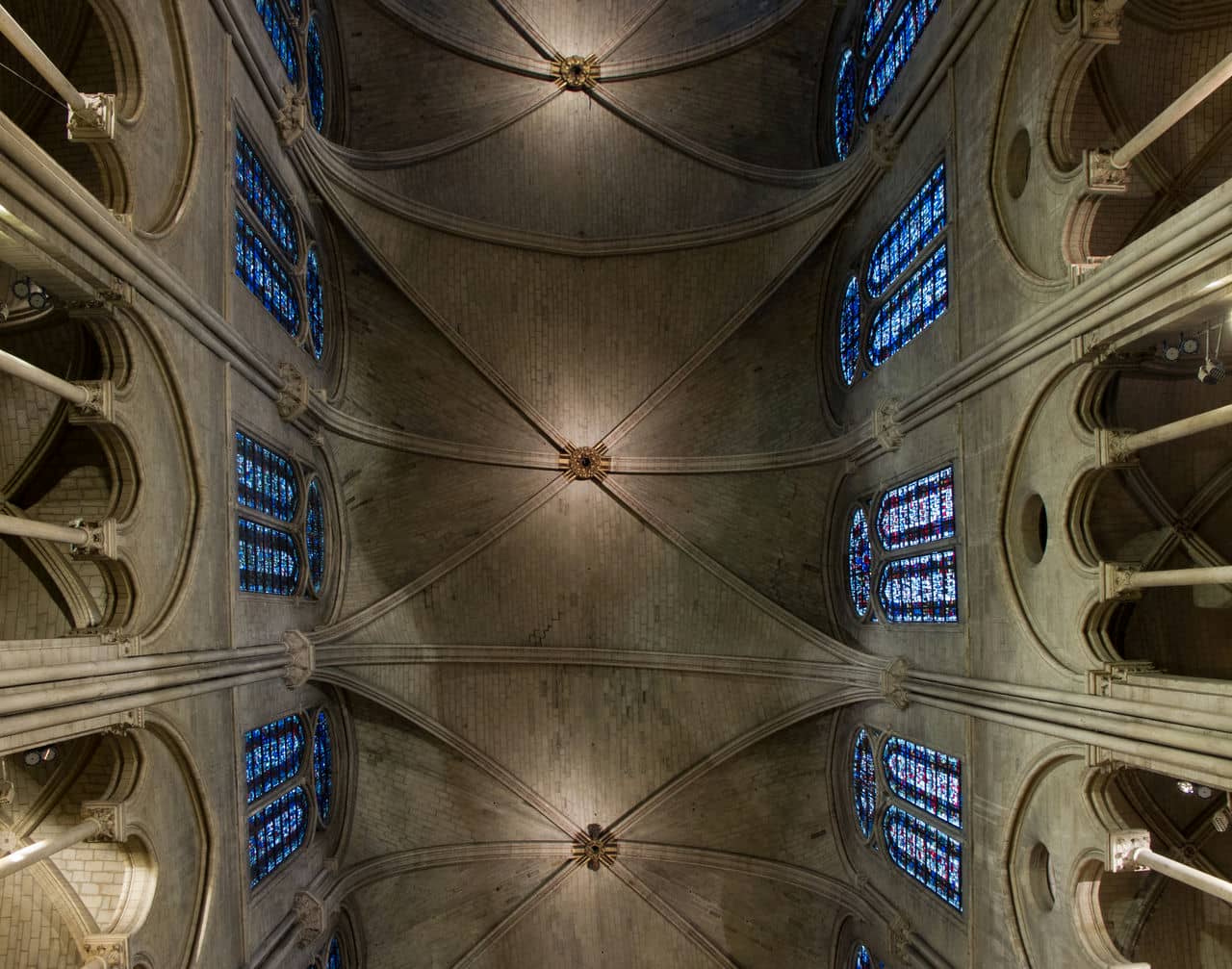
What purpose does the Notre Dame Cathedral Paris serve, and how does the design help?
The Notre Dame Cathedral Paris serves a significant purpose as a religious and cultural center. It functions as a place of worship for the Catholic community. The cathedral provides a sacred space for religious ceremonies, including Mass, baptisms, weddings, and funerals. It serves as the seat of the Archbishop of Paris and holds great religious importance for Catholics in France and around the world. The grandeur and architectural design of the cathedral contribute to the solemn atmosphere and sense of reverence experienced by worshippers. The Cathédrale Notre-Dame de Paris is a cultural landmark and symbol of French heritage. It attracts millions of visitors annually who admire its architectural beauty, historical significance, and artistic treasures. The cathedral houses a collection of religious relics, including the Crown of Thorns, which adds to its cultural and historical value. The cathedral’s design, with its impressive facade, towers, and stained glass windows, creates a lasting impression on visitors and contributes to its status as an emblem of French identity. The design of the Notre Dame Cathedral Paris helps fulfill its purpose in several ways. The spacious interior, with its high vaulted ceilings and abundant natural light filtering through the stained glass windows, creates a sense of awe and reverence for worshippers. The cathedral’s acoustics enhance musical performances and choral singing during religious services. The architectural design of the cathedral, including its flying buttresses and ribbed vaults, provides structural stability, allowing the building to withstand the test of time and remain a place of worship and cultural significance for centuries.
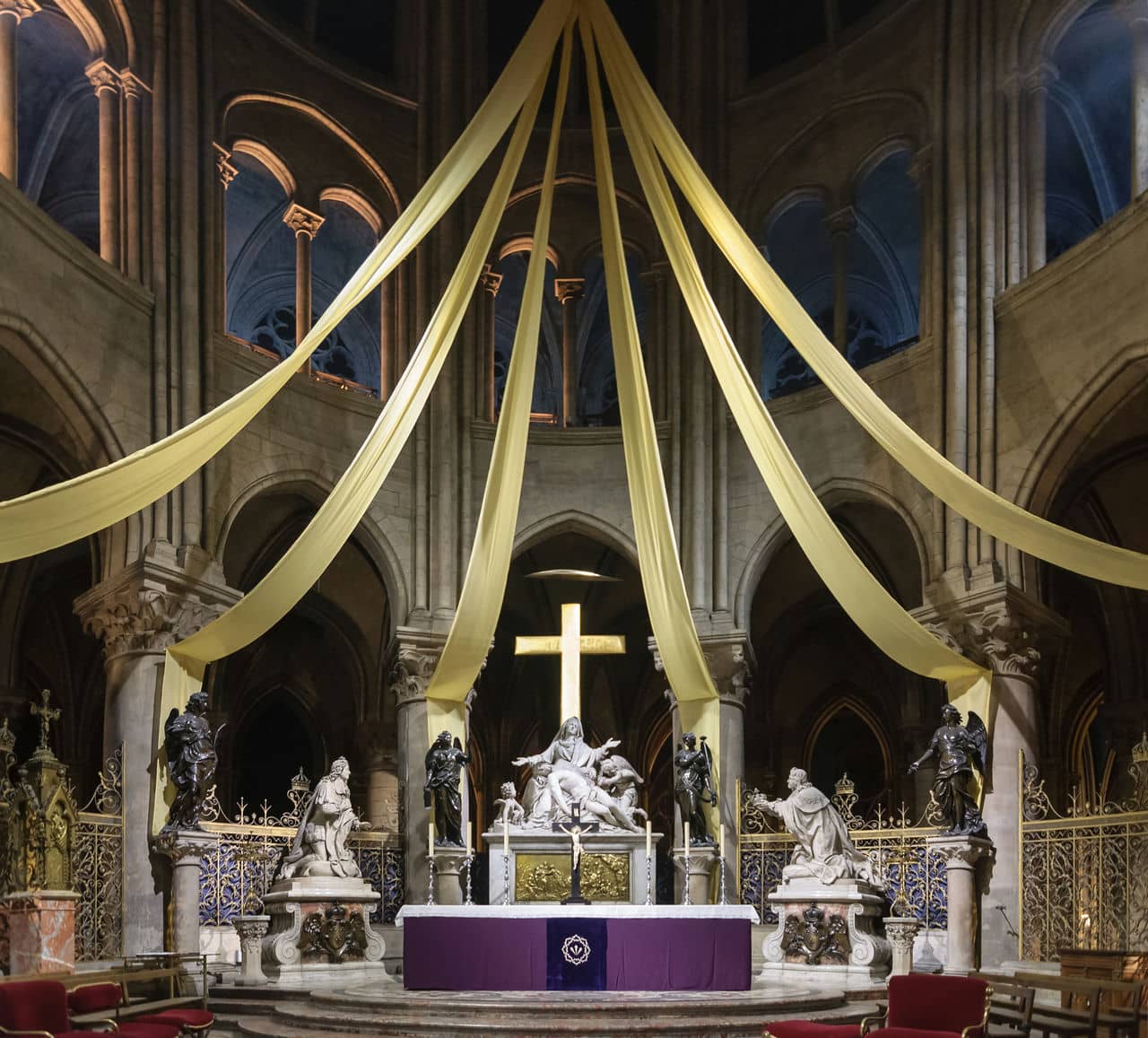
How is the Notre Dame Cathedral Paris maintained?
The Notre Dame Cathedral Paris is maintained through a comprehensive regular maintenance system, restoration projects, and ongoing monitoring. Routine maintenance plays a crucial role in preserving the cathedral. A team of skilled professionals regularly inspects and maintains the structure, including checking for structural integrity, repairing damaged stonework, and addressing issues such as water damage and weathering. Restoration projects are undertaken to address specific areas of deterioration or damage. These projects involve meticulous research, documentation, and traditional techniques. Skilled craftsmen and experts work to restore the architectural elements, such as the stonework, stained glass windows, and sculptures, to their original splendor. The Cathédrale Notre-Dame de Paris has a monitoring system allowing ongoing assessment of its condition. This includes advanced technologies such as sensors to detect movement, temperature fluctuations, and humidity levels.
How does the Notre Dame Cathedral Paris reflect cultural and contextual relevance in its design?
The Notre Dame Cathedral Paris reflects cultural and contextual relevance in its design in 4 ways. Firstly, the cathedral’s architectural style, incorporating Romanesque and Gothic design elements, reflects the cultural context of medieval France. The transition from Romanesque to Gothic architecture during the cathedral’s construction represents the period’s evolving artistic and architectural trends. The Gothic style, with its emphasis on verticality and light, resonated with the spiritual aspirations and cultural values of the time, symbolizing a shift towards a more enlightened and connected relationship with the divine. Secondly, the Notre Dame Cathedral Paris reflects the religious and spiritual significance of the Catholic Church in medieval France. As the seat of the Archbishop of Paris, the cathedral played a central role in the religious life of the community. Its grandeur and architectural design were meant to inspire awe and reverence, reflecting the importance of faith and the church in the people’s lives. The intricate sculptures, stained glass windows, and religious relics within the cathedral reinforce its cultural and spiritual relevance. Thirdly, the design of the Cathédrale Notre-Dame de Paris reflects the contextual significance of its location on the Île de la Cité in the heart of Paris. The cathedral’s prominence on the island, surrounded by the city, symbolizes France’s deep historical and cultural roots. It stands as a landmark and a symbol of French identity, representing the nation’s rich heritage and role in shaping European history. The cathedral’s design, with its soaring towers and imposing facade, contributes to its visual impact and status as an iconic representation of Paris. Lastly, the Cathédrale Notre-Dame de Paris embodies the artistic achievements of its time. The skilled craftsmanship displayed in its intricate stone carvings, decorative sculptures, and stained glass windows showcases the talent and creativity of medieval artisans. These artistic elements reflect the cultural values and aesthetics of the period and the importance of artistic expression in religious and architectural contexts.
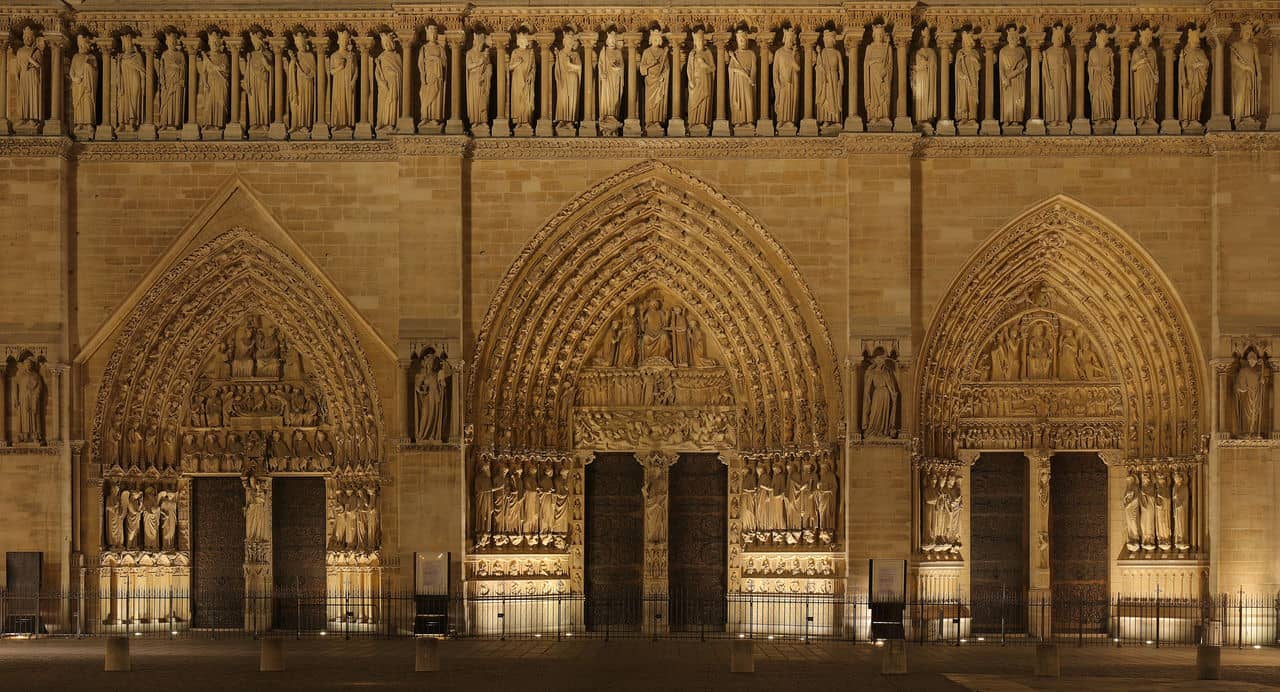
What architectural trend or movement does the Notre Dame Cathedral Paris represent?
The Notre Dame Cathedral Paris represents the architectural trend of the Gothic architectural movement, which was prominent during the medieval period. The cathedral’s design embodies the characteristics of Gothic architecture, including pointed arches, ribbed vaults, and flying buttresses. These elements allowed for the creation of taller and more spacious interiors, emphasizing verticality and light. The Gothic style was a departure from the earlier Romanesque architecture, with its heavy and solid appearance. Instead, the Cathédrale Notre-Dame de Paris showcases the lightness and elegance associated with the Gothic movement. The Gothic architectural trend to which the cathedral belongs originated in the Île-de-France region of France in the 12th century and spread throughout Europe. It reflected a shift in cultural and religious values, emphasizing spirituality, symbolism, and a desire to create heavenly and ethereal spaces. The Notre Dame Cathedral Paris, with its soaring height, intricate ornamentation, and emphasis on vertical lines, exemplifies the Gothic architectural movement and its aspirations to connect the earthly realm with the divine.
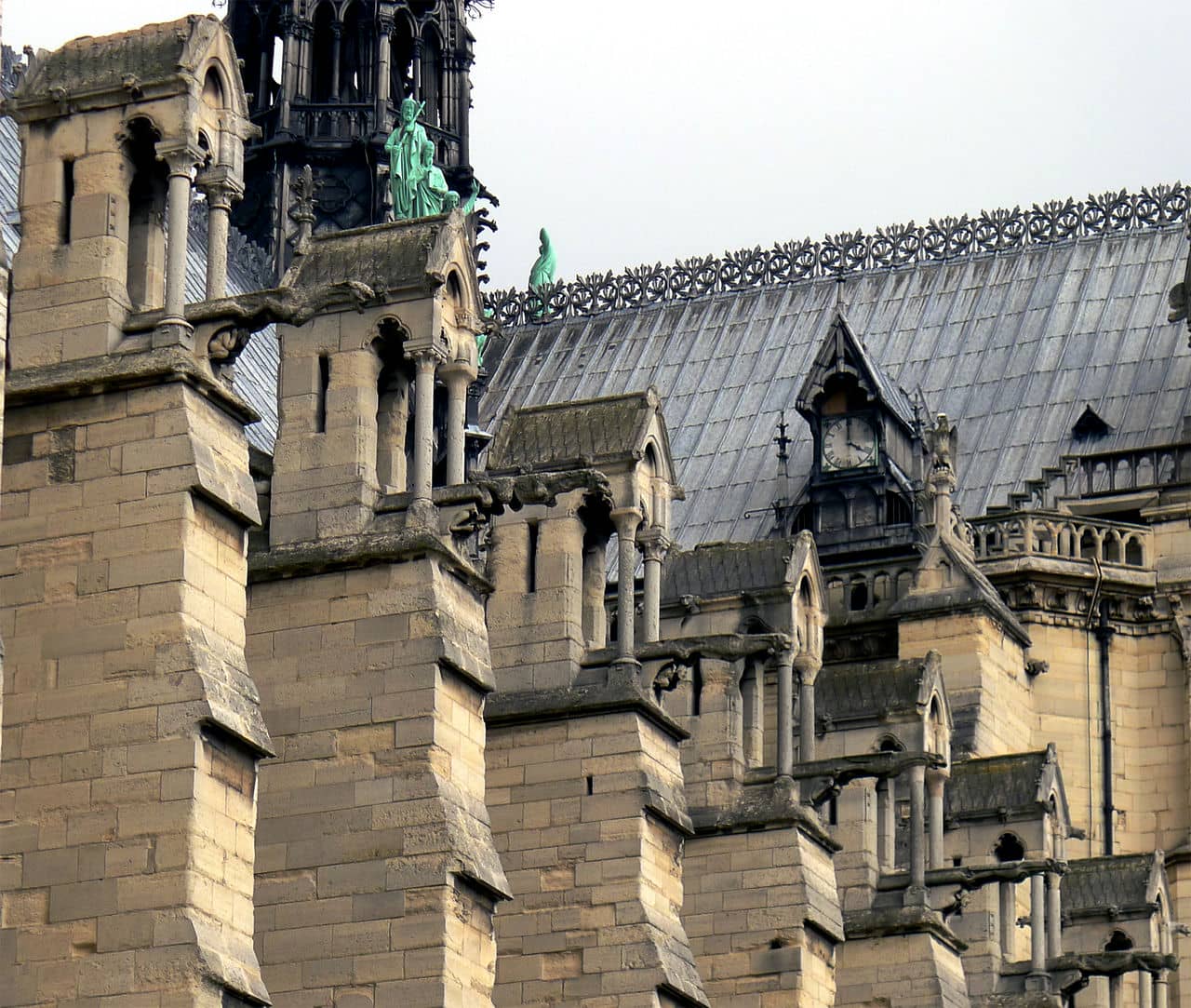
What are the challenges faced during the restoration of the Notre Dame Cathedral Paris?
There are 4 major challenges faced during the restoration of the Notre Dame Cathedral Paris. Firstly, the time pressure and the political interference. The French government has set a deadline of December 8, 2024, for the cathedral’s reopening, which coincides with the opening of the Paris Olympics. The ambitious goal has been criticized by some experts and heritage groups, who argue that it compromises the restoration’s quality and authenticity. The government has appointed a special public institution to oversee the project, which has been accused of bypassing the normal procedures and regulations for historical monuments. Secondly, the technical and logistical challenges. The restoration requires expertise and coordination among various disciplines and crafts, such as architects, engineers, archaeologists, art historians, stone masons, carpenters, glass makers, and organ builders. The cathedral also poses specific difficulties, such as the structure’s instability, lead contamination, and the complexity of the Gothic design. The restoration has to deal with the scarcity of materials and skills, such as the oak wood for the roof and the medieval techniques for the stained-glass windows. Thirdly, the scientific and ethical dilemmas. The restoration has to balance the respect for the original integrity and the historical value of the cathedral with the need for innovation and adaptation to the current standards and expectations. The restoration also has to decide how to deal with the additions and modifications that the cathedral underwent over the centuries, such as the 19th-century spire and the stained-glass windows, which have sparked controversy among the public and the experts. The restoration has to consider the environmental and social impact of the project, such as the carbon footprint, waste management, and public participation. Lastly, the cultural and symbolic significance. The cathedral’s restoration is both a technical and artistic endeavor and a spiritual and emotional one. The cathedral symbolizes the French identity and the European culture and is a place of worship and pilgrimage for millions of people. The restoration has to honor the memory and the legacy of the cathedral while also ensuring its future and its relevance for the new generations. The restoration also has to cope with the expectations and the emotions of the public, who have shown a strong attachment and generous support for the cathedral after the fire.
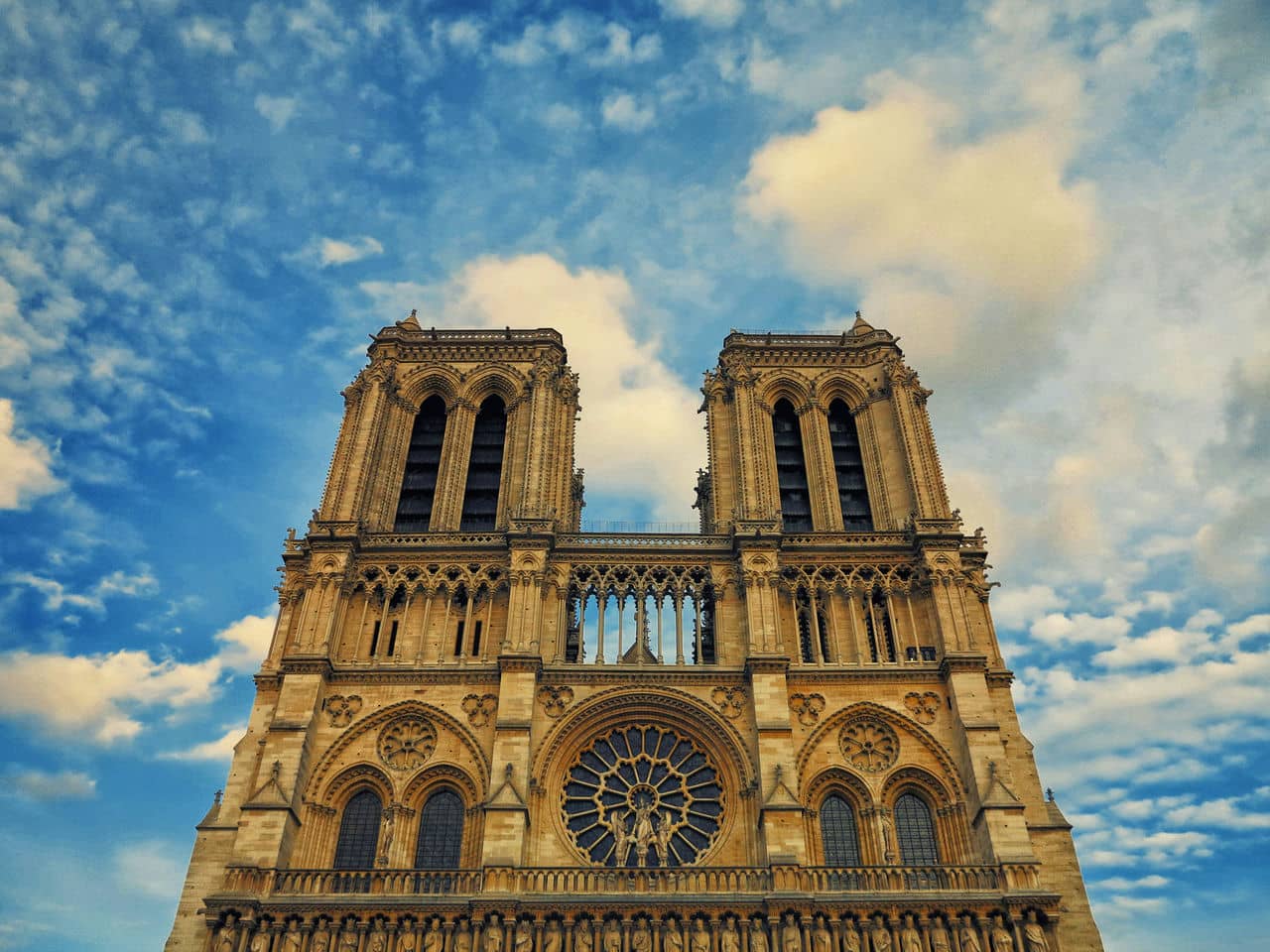
How does the Notre Dame Cathedral Paris comply with contemporary safety and accessibility standards?
The Notre Dame Cathedral Paris complies with contemporary safety and accessibility standards in 4 ways. Firstly, the cathedral has to deal with the risks of fire, which became evident after the devastating blaze in April 2019. The fire destroyed the roof, the spire, and parts of the vaults, damaging the stained-glass windows, the organ, and the artwork inside. The restoration project, which started in 2021, aims to rebuild the cathedral as close to its original state as possible while implementing modern fire prevention and detection systems. These include sprinklers, smoke detectors, fire doors, and fire-resistant materials. The restoration also involves the removal of the lead contamination caused by the fire, which threatens the health of the workers and the public. Secondly, the cathedral has to cope with the effects of pollution, climate change, and natural disasters, which can deteriorate its structure and its artworks. The cathedral is exposed to traffic, industry, and tourism emissions, which can erode the limestone façade, the sculptures, and the stained-glass windows. The cathedral also faces the impacts of rising temperatures, extreme weather events, and flooding, which can cause cracks, leaks, and instability. The restoration project includes cleaning, repairing, and reinforcing the cathedral’s exterior and interior and installing sensors and monitors to track its condition. The restoration also aims to reduce the cathedral’s carbon footprint and energy consumption using renewable sources and efficient systems. Thirdly, the cathedral has to accommodate the needs and expectations of its visitors from different backgrounds and cultures. The cathedral is not only a place of worship but also a museum, a concert hall, and a tourist attraction. The cathedral has to provide information, guidance, and security to its visitors and preserve its sacred and historical character. The restoration project includes improving the signage, the lighting, the audio guides, and creating a new visitor center and entrance. The restoration also involves enhancing cultural and educational programs, such as exhibitions, concerts, and workshops. Lastly, the cathedral has to ensure the accessibility and inclusion of people with disabilities and special needs, who may face barriers and difficulties in visiting the cathedral. The cathedral has to comply with French and European laws and regulations on accessibility, which require the removal of physical, sensory, and cognitive obstacles. The restoration project includes the creation of ramps, lifts, and wheelchair spaces, as well as adapting the doors, the stairs, and the furniture. The restoration also includes providing accessible information and communication, such as braille, large print, subtitles, and sign language.
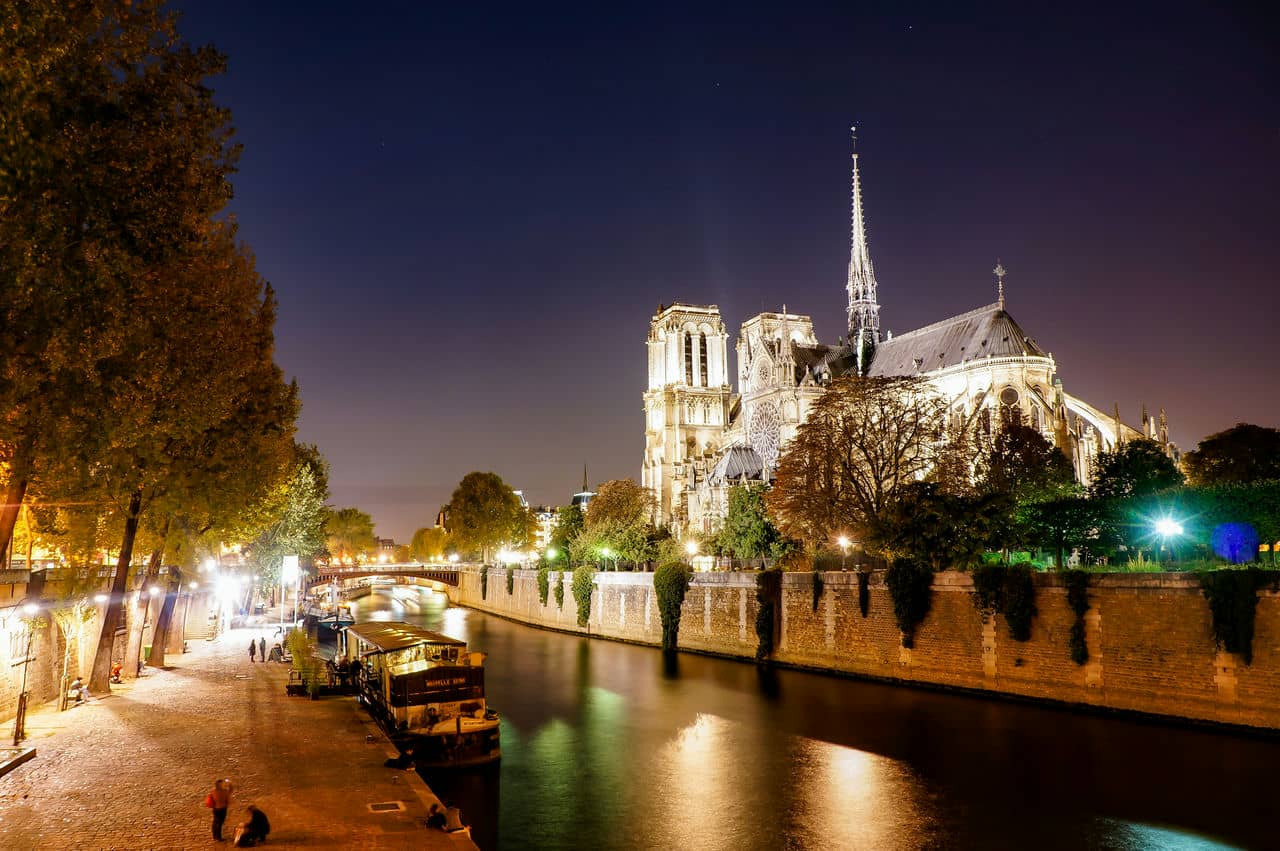
Are there any specific tours for architects or architecture enthusiasts to visit Notre Dame Cathedral Paris?
Yes, there are some specific tours for architects or architecture enthusiasts to visit the cathedral. These tours offer a deeper insight into the history, design, and restoration of the Gothic masterpiece. Friends of Notre Dame de Paris is a non-profit organization supporting the cathedral’s restoration. The virtual tour lets visitors visit the cathedral from their home computer, tablet, or mobile device. They can explore the exterior and interior of the cathedral and learn about its architecture, art, and symbolism. They can also see the damage caused by the fire in 2019 and the progress of the restoration work. The other tour is offered by Autodesk, a software company that provides digital solutions for restoring the cathedral. The tour is also a virtual tour that uses augmented reality to bring the cathedral to life. Visitors can see the cathedral as it was before the fire and the changes and additions made by the 19th-century architect Eugène Viollet-le-Duc. They can also discover the secrets and stories behind the cathedral’s construction and evolution.
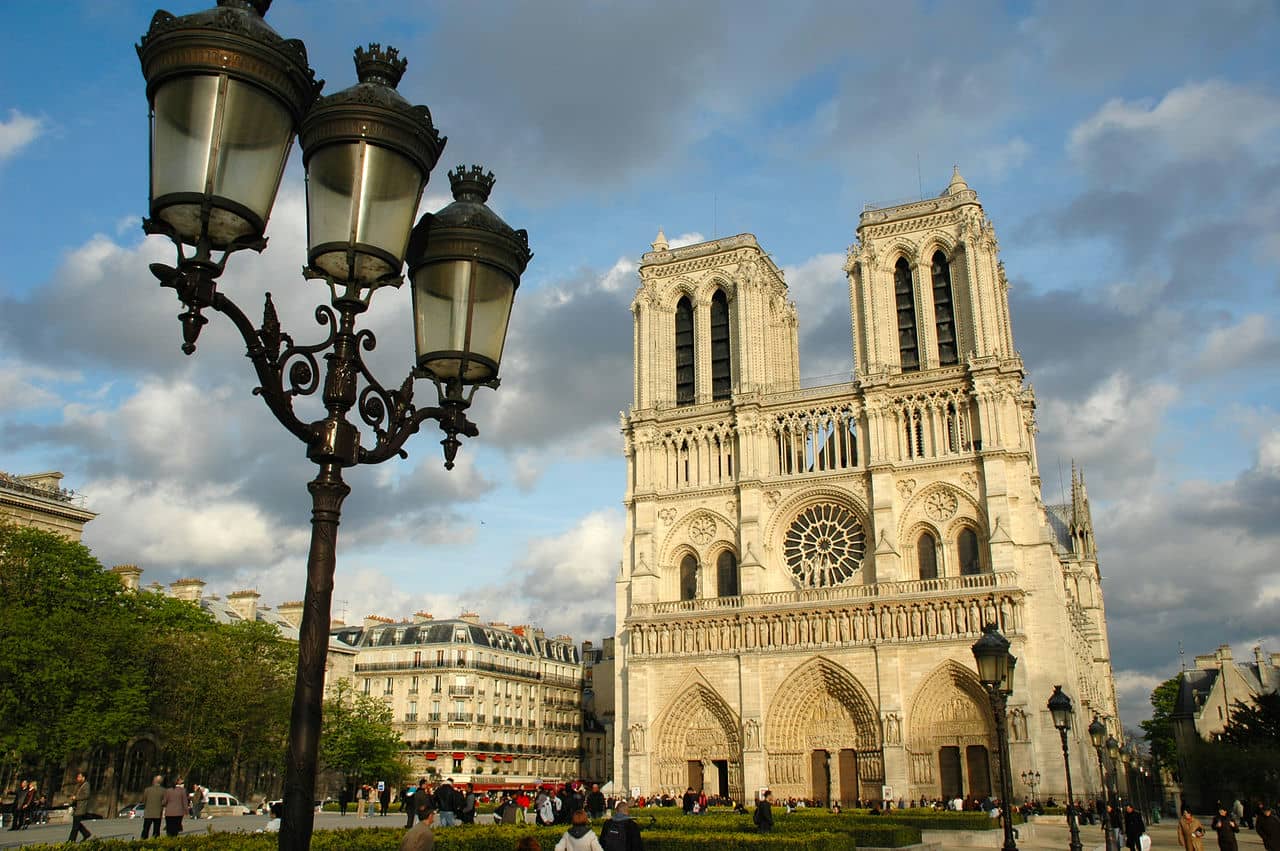
What lessons can architects learn from the design and construction of the Notre Dame Cathedral Paris?
There are 4 lessons that architects can learn from the design and construction of the Notre Dame Cathedral Paris. Firstly, the cathedral demonstrates the use of structural elements that enhance the building’s stability, lightness, and beauty. The cathedral is famous for its flying buttresses, which are external supports that counteract the outward thrust of the vaults and allow the walls to be thinner and higher. The flying buttresses also create a dynamic and elegant appearance as they soar above the ground. The cathedral also features a complex system of ribs, arches, and pillars that distribute the weight and create a harmonious and coherent space. Secondly, the cathedral illustrates the integration of art and function, combining religious and cultural meanings with architectural and engineering solutions. The cathedral is rich in artistic elements, such as sculptures, stained-glass windows, portals, and spires, that convey the stories and values of Christianity and France. The artistic elements also serve functional roles, such as filtering the light, supporting the structure, and guiding the visitors. The cathedral shows how architects can integrate art and function as they create useful, efficient but also meaningful, and beautiful buildings. Thirdly, the cathedral reflects the adaptation to context and change as it responds to the social, historical, and environmental factors that influenced its development. The cathedral was built over a long period, from the 12th to the 19th centuries, and underwent many modifications and additions according to the needs and tastes of different eras. The cathedral also faced many threats and damages, such as wars, revolutions, fires, and pollution, and had to cope with the effects of climate change and natural disasters. The cathedral shows how architects can adapt to context and change as they design flexible and resilient buildings that respect and enhance their surroundings. Lastly, the cathedral exemplifies the preservation and restoration of heritage, as it represents the efforts and challenges of conserving and transmitting a legacy for future generations. The cathedral is a UNESCO World Heritage Site and a national and global treasure that requires constant care and protection. The cathedral also faces the dilemma of restoring its original state or incorporating new elements that reflect its evolution and identity. The cathedral shows how architects can preserve and restore heritage by balancing respect for the past and the vision for the future and involving the participation and collaboration of different stakeholders and disciplines.
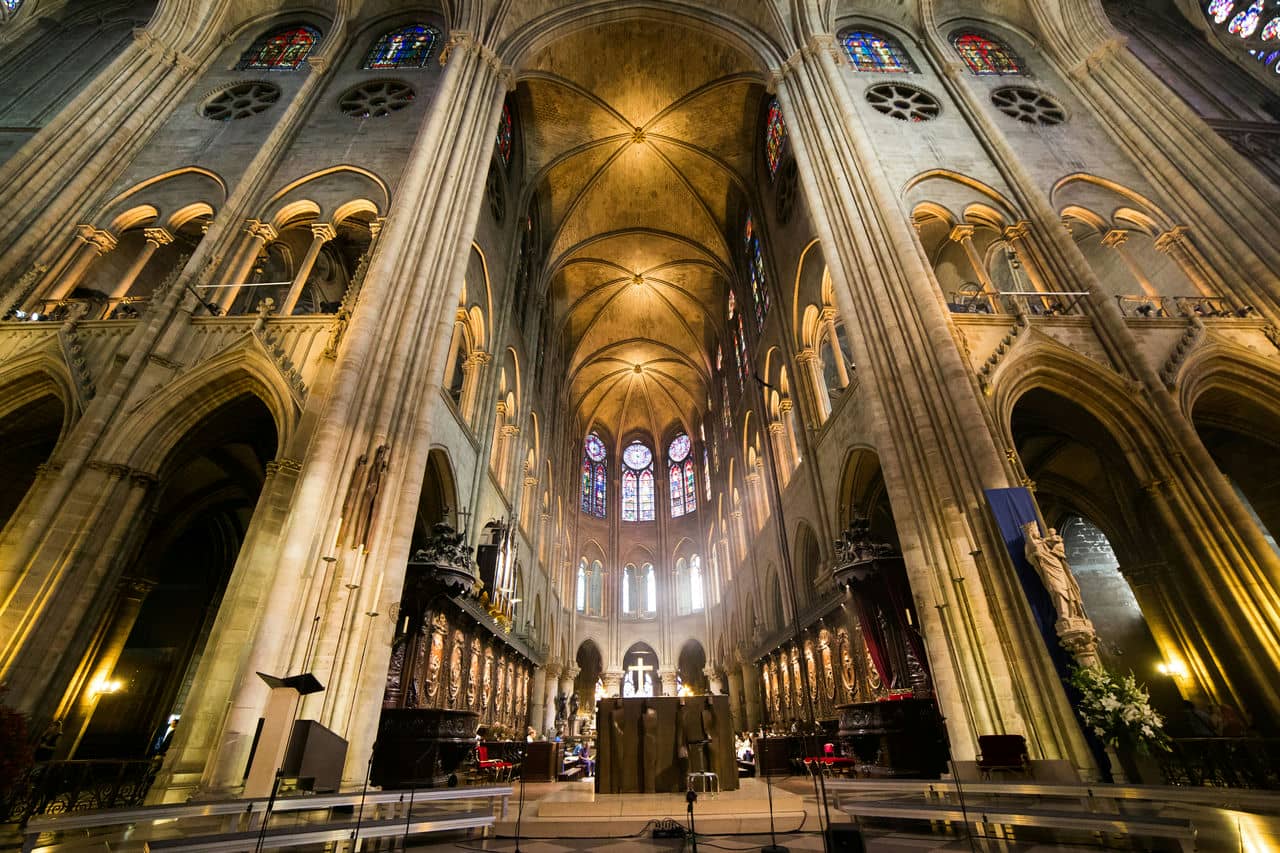
What are the best architectural landmarks to visit as an architect?
Listed below are the best architectural landmarks to visit as an architect:
- Sagrada Familia: The Sagrada Familia is an iconic basilica located in Barcelona, Spain. Designed by popular architect Antoni Gaudí, it is known for its unique and intricate architectural style that combines Gothic and Art Nouveau influences. The basilica has been under construction since 1882 and is still ongoing, making it a fascinating example of long-term architectural vision and dedication. Visitors can admire the stunning facades, soaring towers, and intricate details that make the Sagrada Familia a must-visit landmark for architects and enthusiasts alike.
- Taj Mahal: The Taj Mahal is a UNESCO World Heritage site in Agra, India. Built in the 17th century by Emperor Shah Jahan as a mausoleum for his beloved wife, it is considered one of the most beautiful examples of Mughal architecture. The Taj Mahal features intricate marble inlay work, symmetrical design elements, and a stunning white marble exterior. Its harmonious proportions and elegant details make it a masterpiece of architectural craftsmanship, attracting millions of visitors annually.
- Sydney Opera House: The Sydney Opera House is an iconic performing arts center in Sydney, Australia. Designed by Danish architect Jørn Utzon, it is known for its distinctive sail-like roof structure. The complex houses multiple performance venues and symbolizes modern expressionist architecture. Its innovative design and engineering challenges make it a significant landmark in architectural history. Visitors can take guided tours to explore the interior spaces and learn about the architectural concepts behind this world-famous structure.
- Guggenheim Museum Bilbao: The Guggenheim Museum Bilbao is a contemporary art museum in Bilbao, Spain. Designed by architect Frank Gehry, it is recognized for its striking, curvilinear form and titanium-clad exterior. The museum’s unconventional design pushes the boundaries of traditional architecture, creating a visually captivating and highly acclaimed landmark. Inside, visitors can experience a diverse collection of modern and contemporary art. The Guggenheim Museum Bilbao has revitalized the city, symbolizing urban regeneration through architecture.
- Fallingwater: Fallingwater is a residential house located in Mill Run, Pennsylvania. Designed by architect Frank Lloyd Wright, it is an iconic example of organic architecture that integrates seamlessly with its natural surroundings. The house is built over a waterfall and features cantilevered balconies and open spaces that blur the boundaries between indoors and outdoors. Fallingwater showcases Wright’s principles of harmony between architecture and nature, making it a significant landmark for architects interested in sustainable design.
- St. Peter’s Basilica: St. Peter’s Basilica is a major basilica in Vatican City, Rome. Designed by known architects, including Michelangelo and Gian Lorenzo Bernini, it is the largest church in the world and a masterpiece of Renaissance and Baroque architecture. The basilica’s grandeur is evident in its vast dome, intricate mosaics, and numerous works of art. Architects can appreciate the meticulous detailing and craftsmanship that went into creating this architectural marvel. Visitors can explore the interior, including the famous St. Peter’s Square, and marvel at its architectural and artistic splendor.
- The Louvre: The Louvre is a world-known art museum in Paris, France. Originally a medieval fortress, it was transformed into a grand palace and later became a museum. The Louvre is celebrated for its iconic glass pyramid entrance, designed by architect I.M. Pei. The museum houses an extensive collection of art and historical artifacts, including famous works such as the Mona Lisa. Architects can appreciate the museum’s architectural evolution, from its historic roots to the modern additions that have transformed it into a cultural landmark.
- Burj Khalifa: The Burj Khalifa is a skyscraper in Dubai, United Arab Emirates. Designed by the architectural firm Skidmore, Owings & Merrill, it is the tallest building in the world, standing at 2,717 feet (828 meters). The Burj Khalifa’s sleek and futuristic design features a stepped silhouette and a reflective glass facade. Its engineering marvels, such as the advanced structural systems and high-speed elevators, make it an impressive landmark for architects interested in tall building design. Visitors can enjoy panoramic views of Dubai from the observation decks on the upper floors.
- The Parthenon: The Parthenon is an ancient temple atop the Acropolis hill in Athens, Greece. Built in the 5th century BCE, it symbolizes classical Greek architecture and is one of the most influential buildings in Western history. The Parthenon showcases the Doric order with its iconic columns and pediments adorned with marble sculptures. Its harmonious proportions and refined architectural details demonstrate the principles of balance and symmetry. Architects can study the Parthenon’s design to understand the foundations of classical architecture and its enduring impact on architectural aesthetics.
- The Great Wall of China: The Great Wall of China is an ancient fortification that stretches across northern China. It is an architectural marvel and a UNESCO World Heritage site built over centuries. The wall showcases various construction techniques, including brick, stone, and rammed earth. Its strategic design incorporates watchtowers, battlements, and defensive features. The Great Wall’s vast scale and historical significance make it a remarkable landmark for architects interested in the intersection of architecture and military engineering. Visitors can explore different sections of the wall and admire the panoramic views of the surrounding landscapes.


